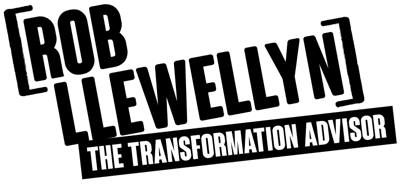Having been involved in business transformations since the 1990s, I have observed the need for better stakeholder relationship management inside many of the organisations I have been fortunate enough to step inside. This has motivated me further to facilitate and encourage better stakeholder relationship management when on a client site and through my writing; so the opportunity to review Dr. Lynda Bourne’s book “Stakeholder Relationship Management” needed no encouragement.
The revised edition of the book was published by Gower in 2012 and consists of a stakeholder relationship management framework, guidebook and implementation approach. To help get points across, the author also refers to various real-world examples of stakeholder relationship management such as the Gulf of Mexico oil spill in 2010 and the opening of Heathrow Terminal 5 in 2008.
The book is written in a way that lends itself to being read from start to finish or used as a reference, with each chapter title being quite self-explanatory – although I do recommend reading Chapters 1 and 2 first, particularly for an introduction to the author’s own methodology, which sets the scene for the rest of the book.
Chapter 1: Why Stakeholders Matter
Chapter 2: Who Can Be Stakeholders
Chapter 3: The Right Stakeholders
Chapter 4: Mapping Stakeholders
Chapter 5: Measuring Stakeholder Attitude
Chapter 6: Monitoring The Engagement
Chapter 7: Effective Implementation
Chapter 8: Defining Organisational Readiness
Chapter 9: Implementation Guidelines
Chapter 10: Conclusion
In chapter 2, the author refers to the work of Christopher Stoney and Diana Winstanley (2001) as an aid to exploring ways that stakeholder relationships can be defined; using the following five dimensions to describe various stakeholder management approaches:
Dimension 1: Political perspectives
Dimension 2: Purpose and objectives of considering stakeholders
Dimension 3: Value of considering stakeholders
Dimension 4: Considering stakeholder intervention levels
Dimension 5: Degree of stakeholder enforcement
This leads on to a description of the author’s own Stakeholder Circle Methodology, which is described online here and is a five-step approach consisting of stakeholder identification, prioritisation, visualisation, engagement and monitoring – all of which are described in detail through chapters 3, 4, 5 and 6.
Chapter 7 dives into the Deepwater Horizon disaster and introduces the concept of “zero cost of effective stakeholder engagement” and Lynda Bourne has contributed this article on the topic. The chapter endeavours to help organisations implement a stakeholder relationship management methodology, in particular the Stakeholder Circle.
Chapters 8 and 9 focus on the analysis, planning, implementation and review required to achieve a successful organisational implementation of a stakeholder relationship management methodology. In doing so, Lynda introduces the Stakeholder Relationship Management Maturity (SRMM) model, which can be compared to the concept used in the Capability Maturity Model Integration (CMMI) and other maturity models that have followed the Carnegie Mellon University approach. An introduction to SRMM can be found on the author’s web site.
Using the Stakeholder Circle methodology, chapter 9 helps the reader discover ways of moving from one level of stakeholder relationship management to another, with a number of practical examples that will help them grasp the toolbox of hints and tips provided.
Finally chapter 10 summarises why Lynda Bourne wrote the book along with a glimpse back at the three main sections of the book. It concludes with a message echoed by many of the world’s authorities on communication, which is: “Communicate! Communicate! Communicate!” Whilst that concept is so simple, it remains one of the most neglected areas of business transformation, from project to C-level.
It is likely that any manager or leader who considers their stakeholders important, will find value in Lynda Bourne’s book. Some might read out of interest and others will read with a view to bringing about positive change to the way in which stakeholder relationships are managed by their organisations.
About Dr Lynda Bourne
Dr Lynda Bourne PMP, FAIM, is an international authority on stakeholder engagement using the Stakeholder Circle®: www.stakeholder-management.com. She works with organisations globally to manage change through managing the relationships essential for successful delivery of organisational outcomes. She is also the international faculty at a university in Bogota, Columbia.
Lynda has presented these ideas at conferences and seminars in Europe, Russia, Asia, North and South America, and Australia to audiences from the IT, construction, defence and mining industries. Her book: Stakeholder Relationship Management was published in 2009. She has contributed to books on stakeholder engagement, and has published papers in many academic and professional journals, including a chapter in 2010 on stakeholder engagement in Project Management Offices (PMO) for the Project Management Institute's (PMI) publication – PMOSIG Program Management Office Handbook. She was 2010 President of the PMI's Melbourne Chapter and has contributed a quarterly column for PMI's PM Network since 2008. Dr Bourne is the author of Stakeholder Relationship Management and Advising Upwards, both published by Gower.
